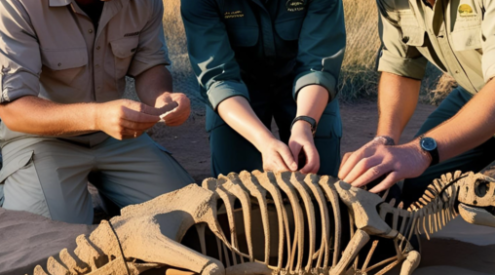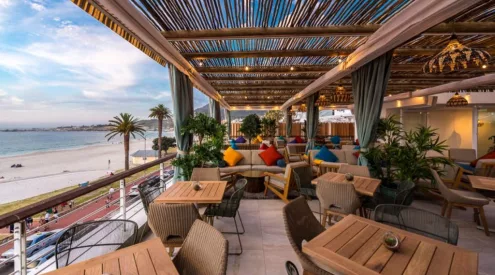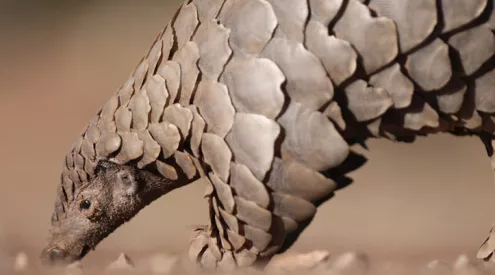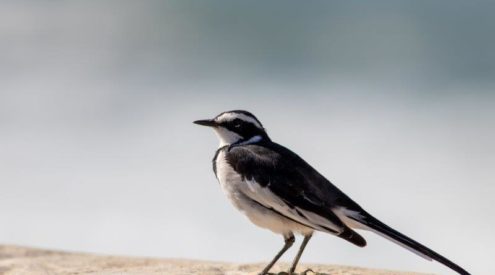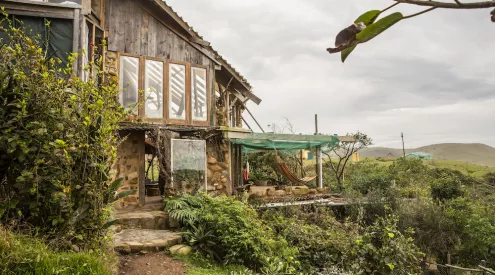It’s a bird that represents our nation’s wealth of wilderness, where the natural environment abounds with creatures found nowhere else on Earth. South Africa is blessed with a rich avifauna of more than 840 species of birds and the blue crane was chosen as their ambassador. Perhaps this is because they’re so graceful: their necks stand sprung like proud cobras, the regal poses hold a blue-grey silhouette floating on long legs above fields, grasslands and plains. Maybe they’ve been given this honour because of their anthropomorphic embodiment of peace, happiness and longevity, where pairs appear to mate for a lifetime and courtship displays are evocative of bonding and love. Or is it because their trumpeting calls are powerful reminders of the vastness of our landscapes?
There are about 25 000 blue cranes in the world, most of which are found in South Africa. The exception is a population of 35 birds in Namibia’s Etosha National Park and isolated breeding pairs in our neighbouring countries. As a species it’s strictly endemic to Southern Africa.
It is indeed one of the most elegant and celebrated birds and because of its size, shape and choice of habitat, it’s easy to spot. Blue cranes can be seen from a great distance, wandering and foraging across open land. In winter, they congregate in flocks of up to 100 birds in a spectacle of fellowship and beauty. In summer, they pair off to build scant nests in dry grasslands, usually within a few hundred metres of water. Once females have laid eggs, pairs share incubation duties, swapping responsibilities about every two hours during the day. Families leave their nests after the second chick hatches, but may return in the evenings to brood the chicks during the cool night.
Blue cranes live for about 30 years in the wild and on average pairs raise one or two chicks a year. Their survival strategy is opposite to that of animals such as rabbits or mice, which have short lives and high reproductive rates. This means crane populations don’t recover easily after declines. They were once abundant in the high-altitude grasslands of eastern South Africa, (which is presently home to 15 per cent of the world population), grassy parts of the Karoo (35 per cent) and the agricultural mosaic of the Overberg wheat-belt of the southwestern Cape (50 per cent).
‘As recently as the 1970s there were well over 100 000 of these wonderful birds in our country,’ says Kerryn Morrison of the Endangered Wildlife Trust, which is trying to conserve and increase blue crane populations in South Africa. ‘Now they’re in trouble.’
Did you know?
- Cranes have a blind spot in their vision, which causes them to collide with powerlines. The blind spot is a result of the position of their eyes in relation to the size and length of the beak.
- Three species of cranes are found in South Africa: blue crane, grey-crowned crane and the wattled crane.
- Cranes aren’t related to herons. One difference is that while herons fly with their necks pulled back, cranes keep theirs outstretched.
Caring for our cranes
Habitat loss and poisoning are largely responsible for the rapid decrease in blue crane numbers. Other threats include an alarming increase in the illegal trade of birds, accidental collisions with power-lines and shifting land-use as a result of climate change.
Unknown factors of windfarm development, coal mining and fracking are all areas of real concern.
BirdLife South Africa congratulates the Endangered Wildlife Trust for its work in developing biodiversity stewardship programmes to secure refuge areas for cranes. It also supports a huge amount of research and monitoring undertaken to establish other innovative mitigation measures to protect the blue crane.
Extra source:
Cranes and Their Habitats: Valuable yet Vulnerable, an Endangered Wildlife Trust publication.
Photography by www.warwicktarboton.co.za

